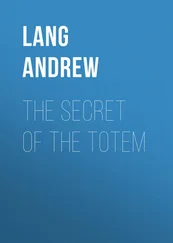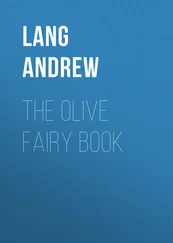Andrew Lang - The Library
Здесь есть возможность читать онлайн «Andrew Lang - The Library» — ознакомительный отрывок электронной книги совершенно бесплатно, а после прочтения отрывка купить полную версию. В некоторых случаях можно слушать аудио, скачать через торрент в формате fb2 и присутствует краткое содержание. Жанр: foreign_antique, foreign_prose, на английском языке. Описание произведения, (предисловие) а так же отзывы посетителей доступны на портале библиотеки ЛибКат.
- Название:The Library
- Автор:
- Жанр:
- Год:неизвестен
- ISBN:нет данных
- Рейтинг книги:3 / 5. Голосов: 1
-
Избранное:Добавить в избранное
- Отзывы:
-
Ваша оценка:
- 60
- 1
- 2
- 3
- 4
- 5
The Library: краткое содержание, описание и аннотация
Предлагаем к чтению аннотацию, описание, краткое содержание или предисловие (зависит от того, что написал сам автор книги «The Library»). Если вы не нашли необходимую информацию о книге — напишите в комментариях, мы постараемся отыскать её.
The Library — читать онлайн ознакомительный отрывок
Ниже представлен текст книги, разбитый по страницам. Система сохранения места последней прочитанной страницы, позволяет с удобством читать онлайн бесплатно книгу «The Library», без необходимости каждый раз заново искать на чём Вы остановились. Поставьте закладку, и сможете в любой момент перейти на страницу, на которой закончили чтение.
Интервал:
Закладка:
In book-hunting the nature of the quarry varies with the taste of the collector. One man is for bibles, another for ballads. Some pursue plays, others look for play bills. “He was not,” says Mr. Hill Burton, speaking of Kirkpatrick Sharpe, “he was not a black-letter man, or a tall copyist, or an uncut man, or a rough-edge man, or an early-English dramatist, or an Elzevirian, or a broadsider, or a pasquinader, or an old brown calf man, or a Grangerite, 1 1 This is the technical name for people who “illustrate” books with engravings from other works. The practice became popular when Granger published his “Biographical History of England.”
or a tawny moroccoite, or a gilt topper, or a marbled insider, or an editio princeps man.” These nicknames briefly dispose into categories a good many species of collectors. But there are plenty of others. You may be a historical-bindings man, and hunt for books that were bound by the great artists of the past and belonged to illustrious collectors. Or you may be a Jametist, and try to gather up the volumes on which Jamet, the friend of Louis Racine, scribbled his cynical “Marginalia.” Or you may covet the earliest editions of modern poets – Shelley, Keats, or Tennyson, or even Ebenezer Jones. Or the object of your desires may be the books of the French romanticists, who flourished so freely in 1830. Or, being a person of large fortune and landed estate, you may collect country histories. Again, your heart may be set on the books illustrated by Eisen, Cochin, and Gravelot, or Stothard and Blake, in the last century. Or you may be so old-fashioned as to care for Aldine classics, and for the books of the Giunta press. In fact, as many as are the species of rare and beautiful books, so many are the species of collectors. There is one sort of men, modest but not unwise in their generations, who buy up the pretty books published in very limited editions by French booksellers, like MM. Lemerre and Jouaust. Already their reprints of Rochefoucauld’s first edition, of Beaumarchais, of La Fontaine, of the lyrics attributed to Molière, and other volumes, are exhausted, and fetch high prices in the market. By a singular caprice, the little volumes of Mr. Thackeray’s miscellaneous writings, in yellow paper wrappers (when they are first editions), have become objects of desire, and their old modest price is increased twenty fold. It is not always easy to account for these freaks of fashion; but even in book-collecting there are certain definite laws. “Why do you pay a large price for a dingy, old book,” outsiders ask, “when a clean modern reprint can be procured for two or three shillings?” To this question the collector has several replies, which he, at least, finds satisfactory. In the first place, early editions, published during a great author’s lifetime, and under his supervision, have authentic texts. The changes in them are the changes that Prior or La Bruyère themselves made and approved. You can study, in these old editions, the alterations in their taste, the history of their minds. The case is the same even with contemporary authors. One likes to have Mr. Tennyson’s “Poems, chiefly Lyrical” (London: Effingham Wilson, Royal Exchange, Cornhill, 1830). It is fifty years old, this little book of one hundred and fifty-four pages, this first fruit of a stately tree. In half a century the poet has altered much, and withdrawn much, but already, in 1830, he had found his distinctive note, and his “Mariana” is a masterpiece. “Mariana” is in all the collections, but pieces of which the execution is less certain must be sought only in the old volume of 1830. In the same way “The Strayed Reveller, and other poems, by A.” (London: B. Fellowes, Ludgate Street, 1849) contains much that Mr. Matthew Arnold has altered, and this volume, like the suppressed “Empedocles on Etna, and other Poems, by A.” (1852), appeals more to the collector than do the new editions which all the world may possess. There are verses, curious in their way, in Mr. Clough’s “Ambarvalia” (1849), which you will not find in his posthumous edition, but which “repay perusal.” These minutiæ of literary history become infinitely more important in the early editions of the great classical writers, and the book-collector may regard his taste as a kind of handmaid of critical science. The preservation of rare books, and the collection of materials for criticism, are the useful functions, then, of book-collecting. But it is not to be denied that the sentimental side of the pursuit gives it most of its charm. Old books are often literary relics , and as dear and sacred to the lover of literature as are relics of another sort to the religious devotee. The amateur likes to see the book in its form as the author knew it. He takes a pious pleasure in the first edition of “Les Précieuses Ridicules,” (M.DC.LX.) just as Molière saw it, when he was fresh in the business of authorship, and wrote “Mon Dieu, qu’un Autheur est neuf, la première fois qu’on l’imprime.” All editions published during a great man’s life have this attraction, and seem to bring us closer to his spirit. Other volumes are relics, as we shall see later, of some famed collector, and there is a certain piety in the care we give to books once dear to Longepierre, or Harley, or d’Hoym, or Buckle, to Madame de Maintenon, or Walpole, to Grolier, or Askew, or De Thou, or Heber. Such copies should be handed down from worthy owners to owners not unworthy; such servants of literature should never have careless masters. A man may prefer to read for pleasure in a good clear reprint. M. Charpentier’s “Montaigne” serves the turn, but it is natural to treasure more “Les Essais de Michel Seigneur de Montaigne,” that were printed by Francoise le Febre, of Lyon, in 1595. It is not a beautiful book; the type is small, and rather blunt, but William Drummond of Hawthornden has written on the title-page his name and his device, Cipresso e Palma . There are a dozen modern editions of Molière more easily read than the four little volumes of Wetstein (Amsterdam, 1698), but these contain reduced copies of the original illustrations, and here you see Arnolphe and Agnes in their habits as they lived, Molière and Mdlle. de Brie as the public of Paris beheld them more than two hundred years ago. Suckling’s “Fragmenta Aurea” contain a good deal of dross, and most of the gold has been gathered into Miscellanies, but the original edition of 1646, “after his own copies,” with the portrait of the jolly cavalier who died ætatis suae 28, has its own allurement. Theocritus is more easily read, perhaps, in Wordsworth’s edition, or Ziegler’s; but that which Zacharias Calliergi printed in Rome (1516), with an excommunication from Leo X. against infringement of copyright, will always be a beautiful and desirable book, especially when bound by Derome. The gist of the pious Prince Conti’s strictures on the wickedness of comedy may be read in various literary histories, but it is natural to like his “Traité de la Comedie selon la tradition de l’Eglise, Tirée des Conciles et des saints Pères,” published by Lovys Billaine in 1660, especially when the tract is a clean copy, arrayed in a decorous black morocco.
These are but a few common examples, chosen from a meagre little library, a “twopenny treasure-house,” but they illustrate, on a minute scale, the nature of the collector’s passion, – the character of his innocent pleasures. He occasionally lights on other literary relics of a more personal character than mere first editions. A lucky collector lately bought Shelley’s copy of Ossian, with the poet’s signature on the title-page, in Booksellers’ Row. Another possesses a copy of Foppens’s rare edition of Petrarch’s “Le Sage Resolu contre l’une et l’autre Fortune,” which once belonged to Sir Hudson Lowe, the gaoler of Napoleon, and may have fortified, by its stoical maxims, the soul of one who knew the extremes of either fortune, the captive of St. Helena. But the best example of a book, which is also a relic, is the “Imitatio Christi,” which belonged to J. J. Rousseau. Let M. Tenant de Latour, lately the happy owner of this possession, tell his own story of his treasure: It was in 1827 that M. de Latour was walking on the quai of the Louvre. Among the volumes in a shop, he noticed a shabby little copy of the “Imitatio Christi.” M. de Latour, like other bibliophiles, was not in the habit of examining stray copies of this work, except when they were of the Elzevir size, for the Elzevirs published a famous undated copy of the “Imitatio,” a book which brings considerable prices. However, by some lucky chance, some Socratic dæmon whispering, may be, in his ear, he picked up the little dingy volume of the last century. It was of a Paris edition, 1751, but what was the name on the fly-leaf. M. de Latour read à J. J. Rousseau . There was no mistake about it, the good bibliophile knew Rousseau’s handwriting perfectly well; to make still more sure he paid his seventy-five centimes for the book, and walked across the Pont des Arts, to his bookbinder’s, where he had a copy of Rousseau’s works, with a facsimile of his handwriting. As he walked, M. de Latour read in his book, and found notes of Rousseau’s on the margin. The facsimile proved that the inscription was genuine. The happy de Latour now made for the public office in which he was a functionary, and rushed into the bureau of his friend the Marquis de V. The Marquis, a man of great strength of character, recognised the signature of Rousseau with but little display of emotion. M. de Latour now noticed some withered flowers among the sacred pages; but it was reserved for a friend to discover in the faded petals Rousseau’s favourite flower, the periwinkle. Like a true Frenchman, like Rousseau himself in his younger days, M. de Latour had not recognised the periwinkle when he saw it. That night, so excited was M. de Latour, he never closed an eye! What puzzled him was that he could not remember, in all Rousseau’s works, a single allusion to the “Imitatio Christi.” Time went on, the old book was not rebound, but kept piously in a case of Russia leather. M. de Latour did not suppose that “dans ce bas monde it fût permis aux joies du bibliophile d’aller encore plus loin.” He imagined that the delights of the amateur could only go further, in heaven. It chanced, however, one day that he was turning over the “Oeuvres Inédites” of Rousseau, when he found a letter, in which Jean Jacques, writing in 1763, asked Motiers-Travers to send him the “Imitatio Christi.” Now the date 1764 is memorable, in Rousseau’s “Confessions,” for a burst of sentiment over a periwinkle, the first he had noticed particularly since his residence at Les Charmettes , where the flower had been remarked by Madame de Warens. Thus M. Tenant de Latour had recovered the very identical periwinkle, which caused the tear of sensibility to moisten the fine eyes of Jean Jacques Rousseau.
Читать дальшеИнтервал:
Закладка:
Похожие книги на «The Library»
Представляем Вашему вниманию похожие книги на «The Library» списком для выбора. Мы отобрали схожую по названию и смыслу литературу в надежде предоставить читателям больше вариантов отыскать новые, интересные, ещё непрочитанные произведения.
Обсуждение, отзывы о книге «The Library» и просто собственные мнения читателей. Оставьте ваши комментарии, напишите, что Вы думаете о произведении, его смысле или главных героях. Укажите что конкретно понравилось, а что нет, и почему Вы так считаете.












